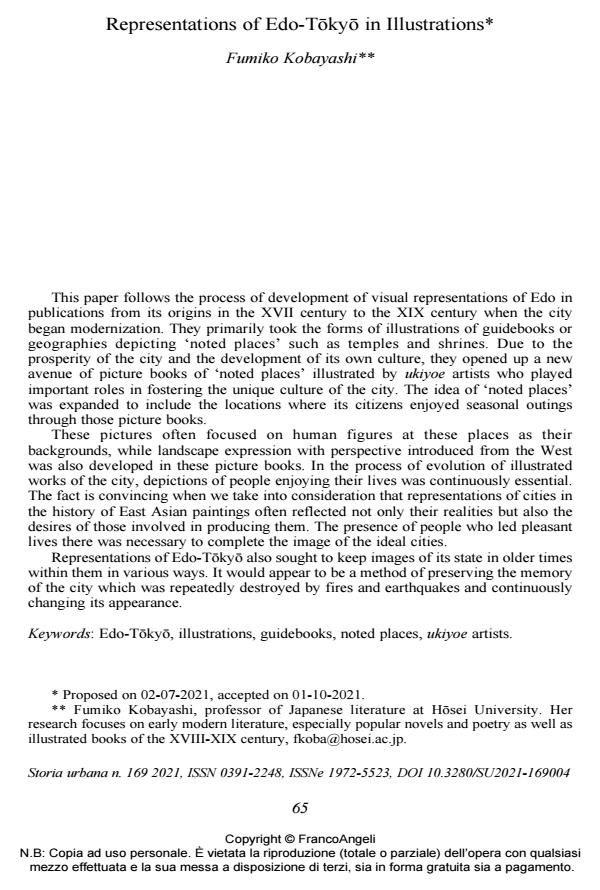Representations of Edo-Tokyo in Illustrations
Journal title STORIA URBANA
Author/s Fumiko Kobayashi
Publishing Year 2022 Issue 2021/169 Language English
Pages 27 P. 65-91 File size 904 KB
DOI 10.3280/SU2021-169003
DOI is like a bar code for intellectual property: to have more infomation
click here
Below, you can see the article first page
If you want to buy this article in PDF format, you can do it, following the instructions to buy download credits

FrancoAngeli is member of Publishers International Linking Association, Inc (PILA), a not-for-profit association which run the CrossRef service enabling links to and from online scholarly content.
This paper follows the process of development of visual representations of Edo in publications from its origins in the XVII century to the XIX century when the city began modernization. They primarily took the forms of illustrations of guidebooks or geographies depicting ‘noted places’ such as temples and shrines. Due to the prosperity of the city and the development of its own culture, they opened up a new avenue of picture books of ‘noted places’ illustrated by ukiyoe artists who played important roles in fostering the unique culture of the city. The idea of ‘noted places’ was expanded to include the locations where its citizens enjoyed seasonal outings through those picture books. These pictures often focused on human figures at these places as their backgrounds, while landscape expression with perspective introduced from the West was also developed in these picture books. In the process of evolution of illustrated works of the city, depictions of people enjoying their lives was continuously essential. The fact is convincing when we take into consideration that representations of cities in the history of East Asian paintings often reflected not only their realities but also the desires of those involved in producing them. The presence of people who led pleasant lives there was necessary to complete the image of the ideal cities. Representations of Edo-Tokyo also sought to keep images of its state in older times within them in various ways. It would appear to be a method of preserving the memory of the city which was repeatedly destroyed by fires and earthquakes and continuously changing its appearance.
Keywords: Edo-Tōkyō, illustrations, guidebooks, noted places, ukiyoe artists.
Fumiko Kobayashi, Representations of Edo-Tokyo in Illustrations in "STORIA URBANA " 169/2021, pp 65-91, DOI: 10.3280/SU2021-169003